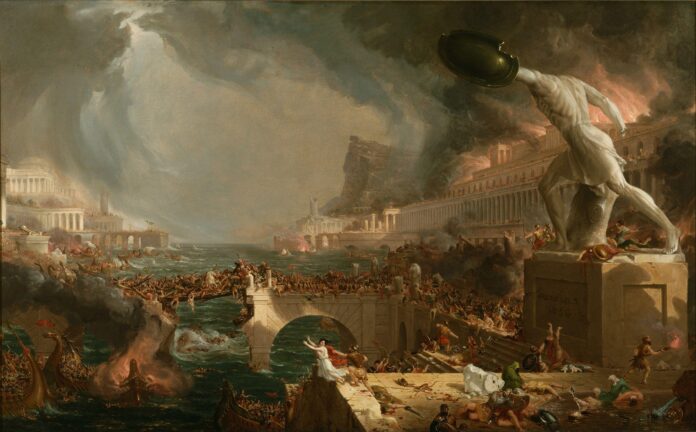The art market seems to be on the blink these days, and I have been asking myself whether it will slump as it did in 2008, when I made the documentary The Great Contemporary Art Bubble, which followed the market from its peak in spring 2008 to the bust in autumn that year.
There’s been a brace of bad news. The veteran New York art adviser Lisa Schiff has closed her business with at least $5m of debt. Simon Lee’s blue-chip Mayfair gallery has gone into administration. Christie’s modern and contemporary auction in June was down 66% on last year. There are so many stories of works by market favourites, such as Jean-Michel Basquiat and Gerhard Richter, going unsold, that they constitute circumstantial evidence. And—no surprise here—the NFT market has gone belly up.
“So, a couple of medium-to-small-sized players are facing a cashflow crisis, sales are down and the frothiest end of the market is dead? Is that all you got?” I hear you cry. Art Basel/UBS’s last report on the global art market said it was beginning to “cool”. But cooling is very different from crashing. The optimists offer me excuses for the sluggish market today that echo those I heard in 2008. First, there are the art market rationales—the market, or this or that sector or specific artist’s market, is due a correction (Damien Hirst then, or NFTs), there is a lack of consignments of first-class works and private sales are still very active. Second, there are the economic-context rationales—the world’s UHNWIs (ultra-high-net-worth individuals/billionaires) are so rich they are immune to downturns in the economy, and if interest rates go up, they will have even more money.
There is some truth in these counterarguments. The art market crash of 2008/09 was caused by an economic shock, just like the art market crashes of the 1930s and 1980s. Today we have the economic headwinds of the post-pandemic recovery and Russia’s war against Ukraine, but they are not on a comparable scale. Just because works by Basquiat, Willem de Kooning, Matthew Barney and Elizabeth Peyton fail to reach their reserves at auction or reportedly go unsold at art fairs does not mean the entire art market is crashing. I remember how the market surged and surged during the subprime mortgage crisis, until there was one last big blow-out at Damien Hirst’s Beautiful Inside My Head Forever auction in September 2008, on the very day of the collapse of Lehman Brothers. The auctions at the big three houses in October and November that year were down 50% in lots sold and totals expected, and then in February down 75%.
There is no headline statistic like that just yet. Nevertheless, I feel the moment approaching. My conviction is based on a mistake I made in the final commentary in my 2008 documentary. Then I said rather boldly: “The contemporary art bubble was the last bubble to burst but when it did it went with a big bang … The art world still thinks things will be back to normal soon, but I doubt it.”
Easy money
But the art market came back, a year or two later, bigger and bubblier than ever. The reasons were the easy money of quantitative easing (QE) and low interest rates, the lack of regulation, which enables wealth to be hidden as art in offshore entities, alongside the new growing art markets in the Gulf and the relative declining value of other assets—all of which more than offset the economic negatives.
Today we still have emerging markets to sustain demand, in the Gulf, South Korea, India and Africa, but the other factors have been severely weakened by changing economic policy and better regulation. QE is being phased out in Western economies, while money-laundering with art has been made harder by regulations from the European Union and the Organisation for Economic Co-operation and Development (OECD), the expansion of the remit of the US’s Bank Secrecy Act and the new activism of the American agencies and Congress to investigate the use of art for sanctions-busting.
It is this that explains the slow deflation of the market over the past two years. The bad news is sinking in slowly, but I think there will be a tipping point. Booms turn to busts after drops in value lead to a contagious loss of confidence. Still, I could be wrong; I’ve been half-wrong before!

























